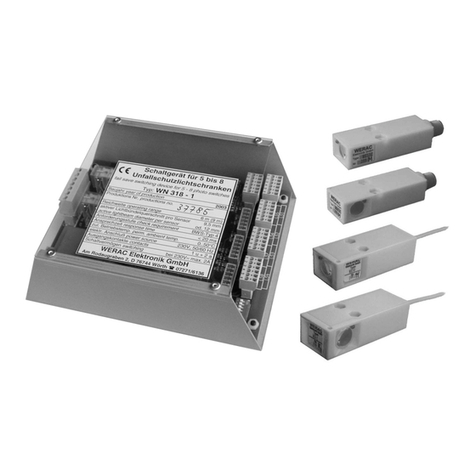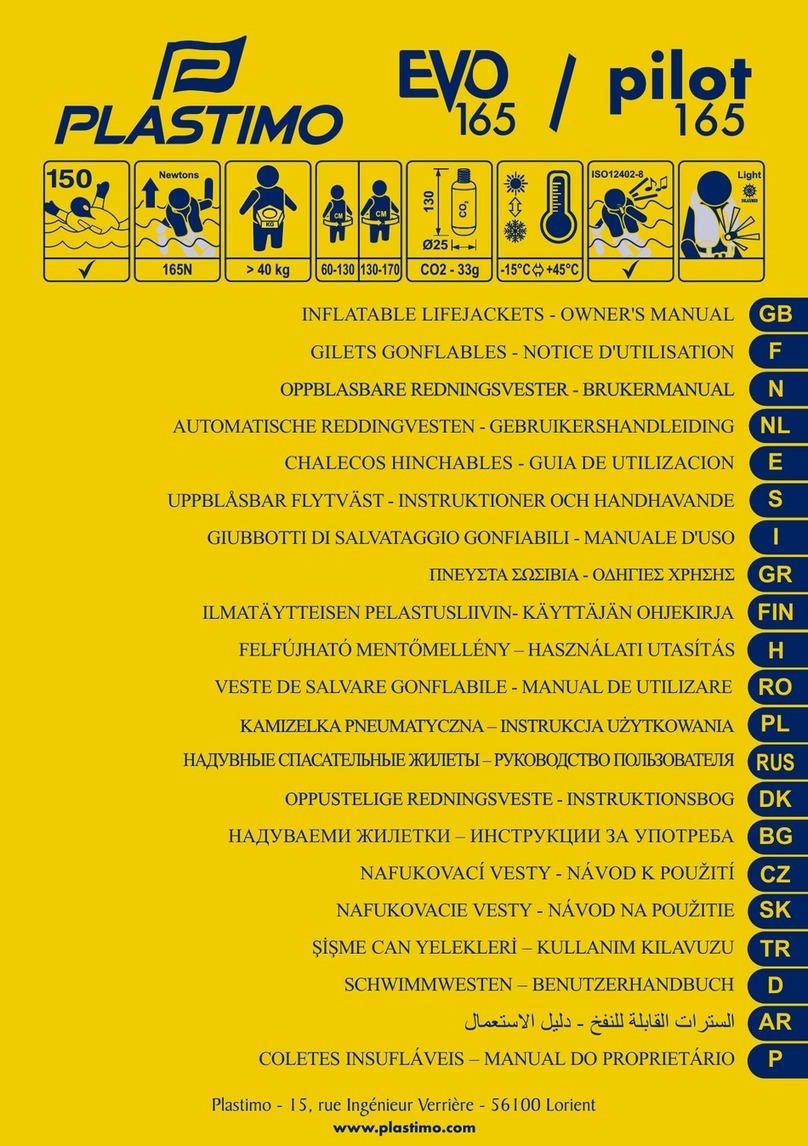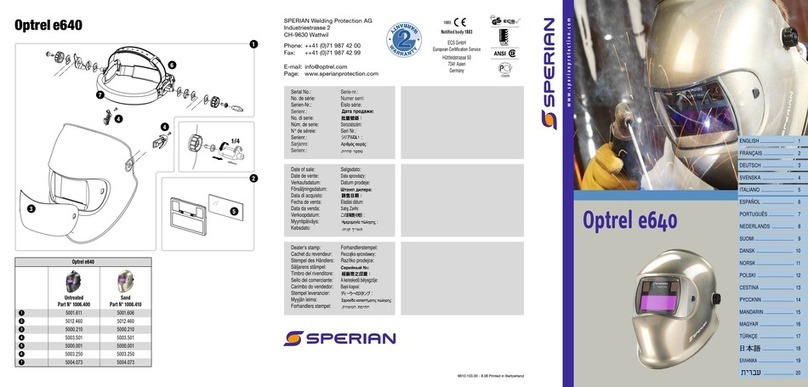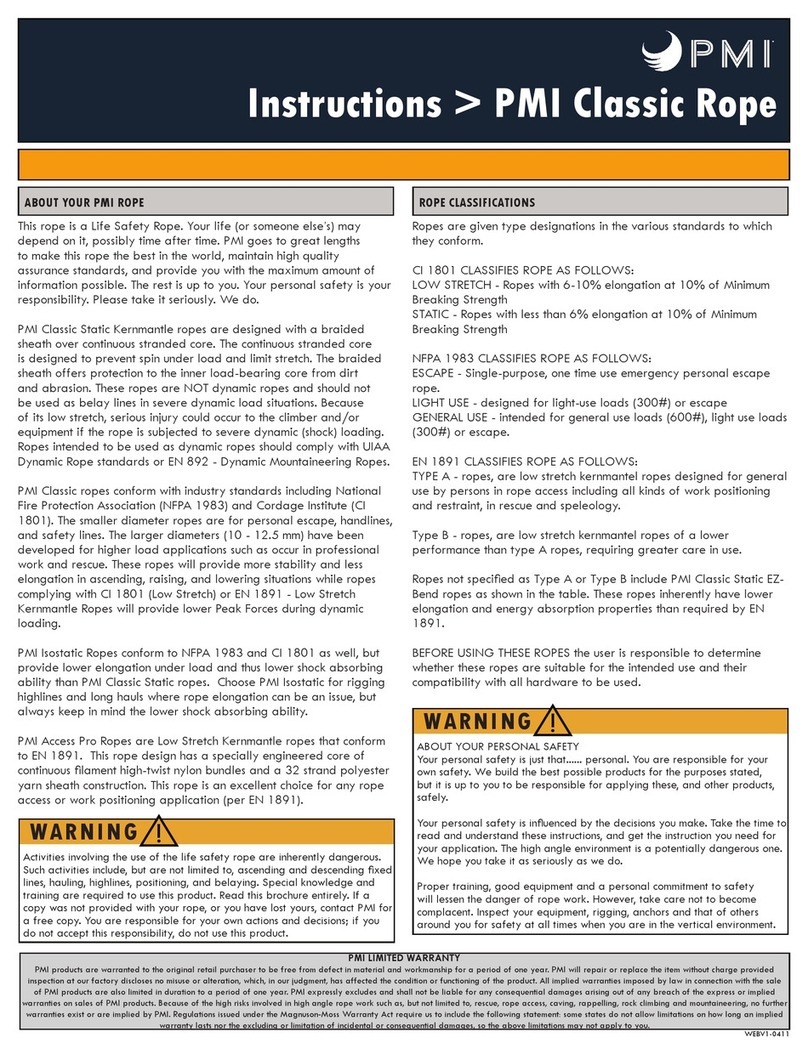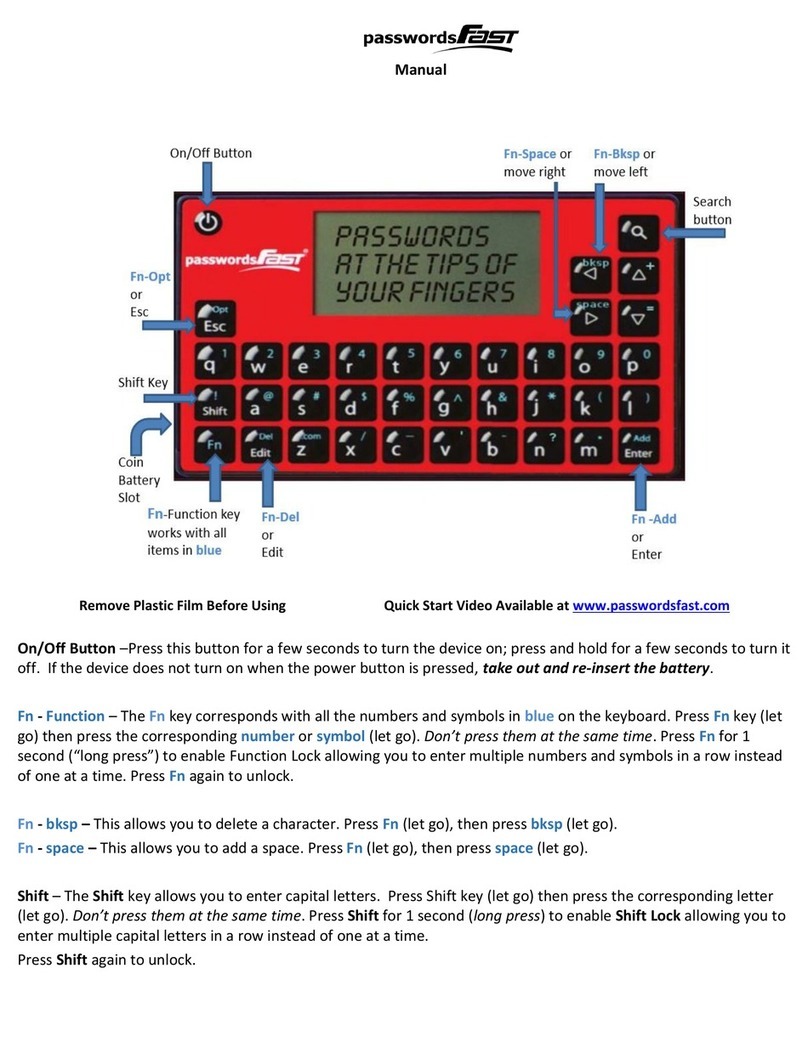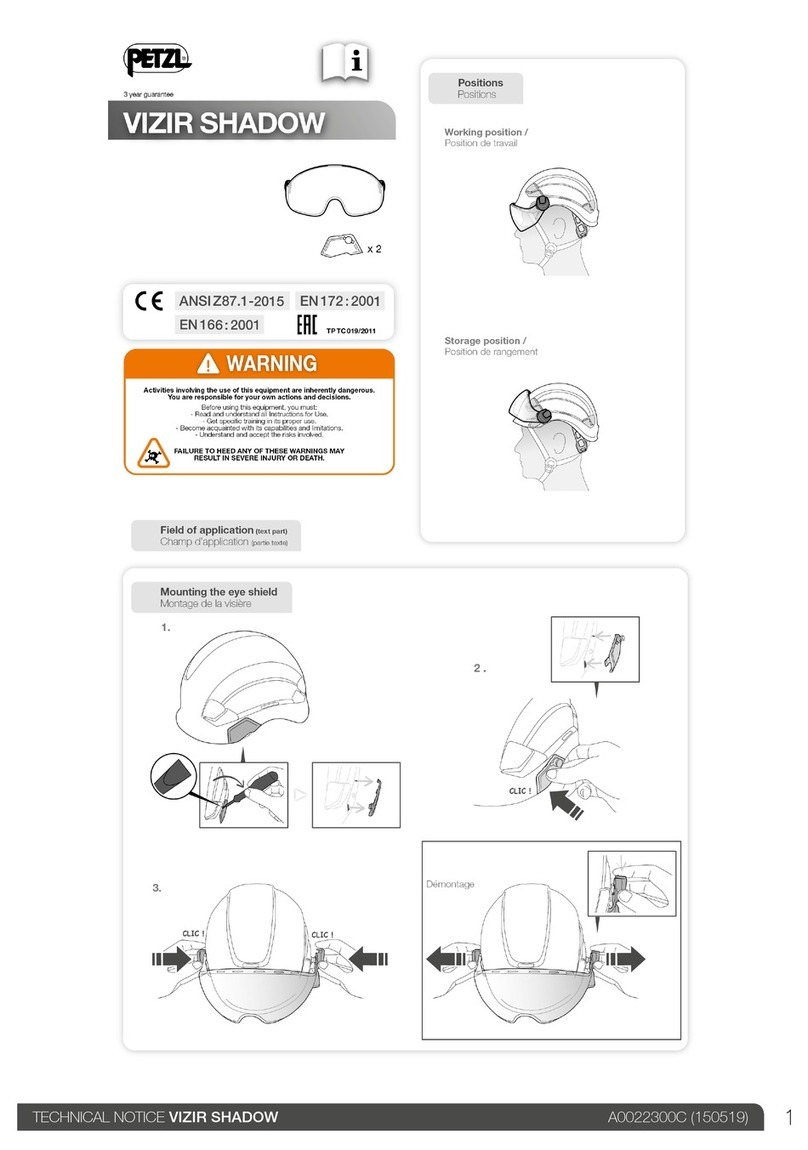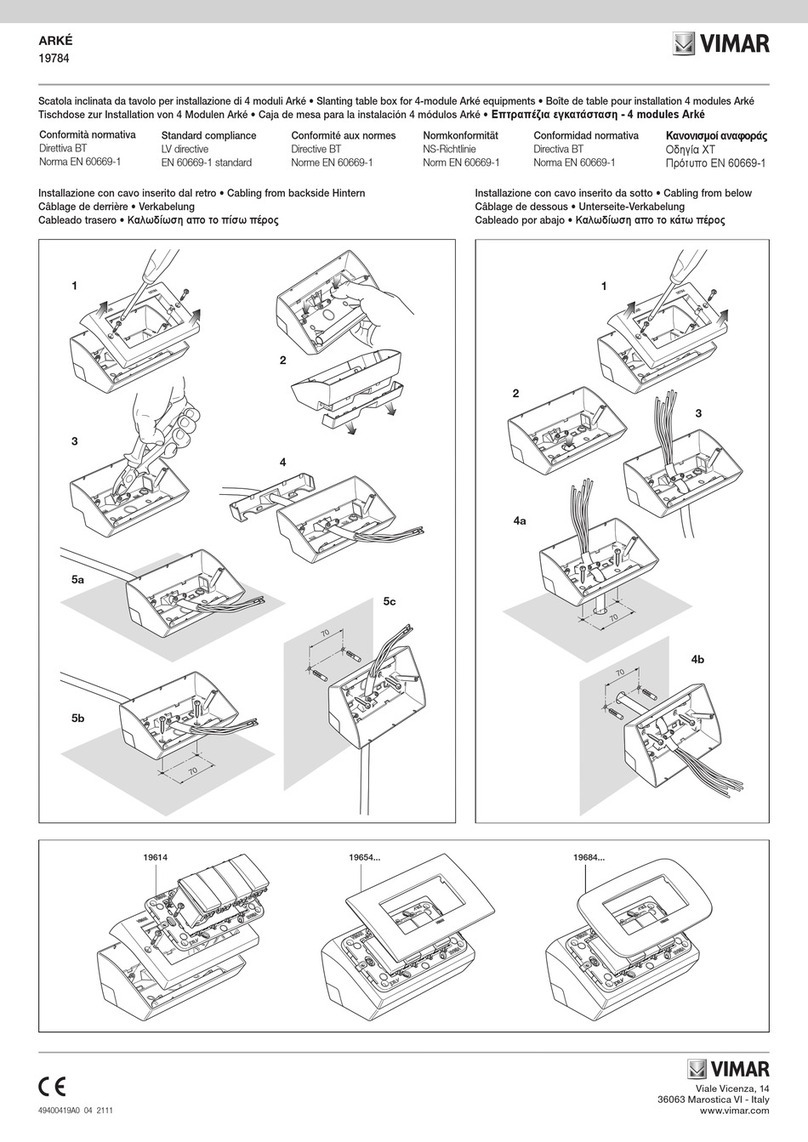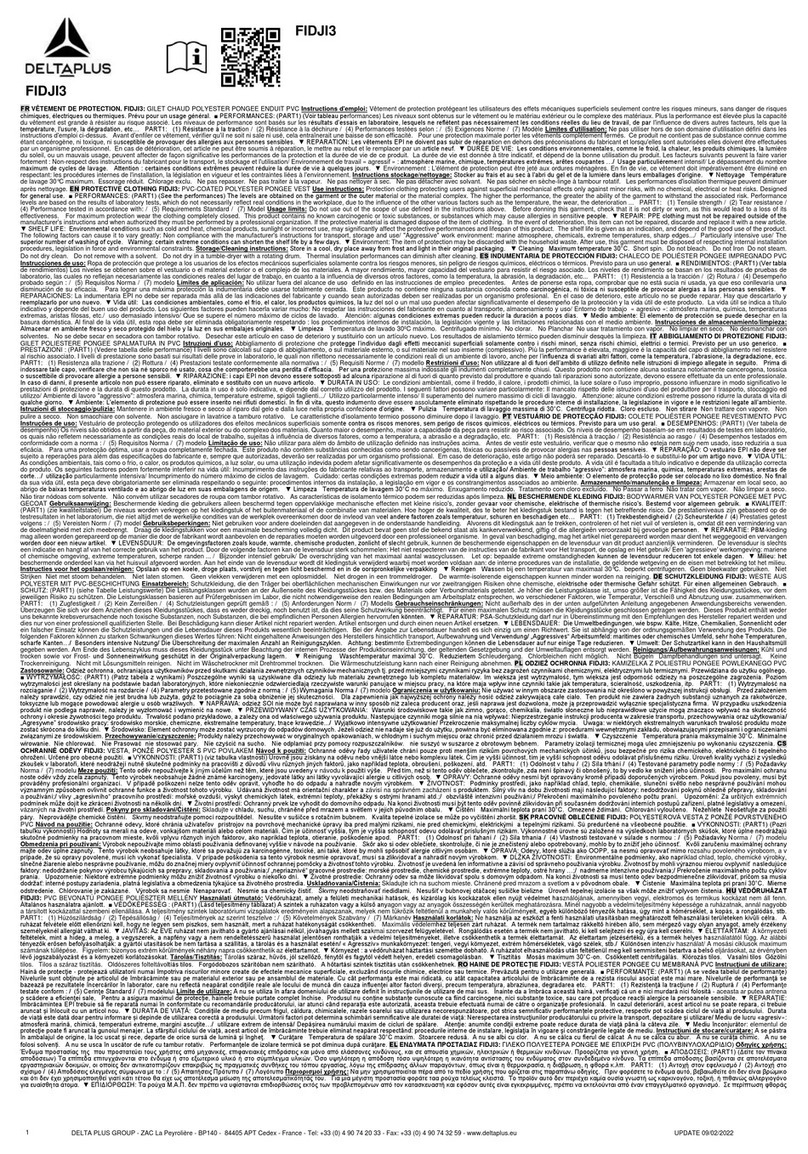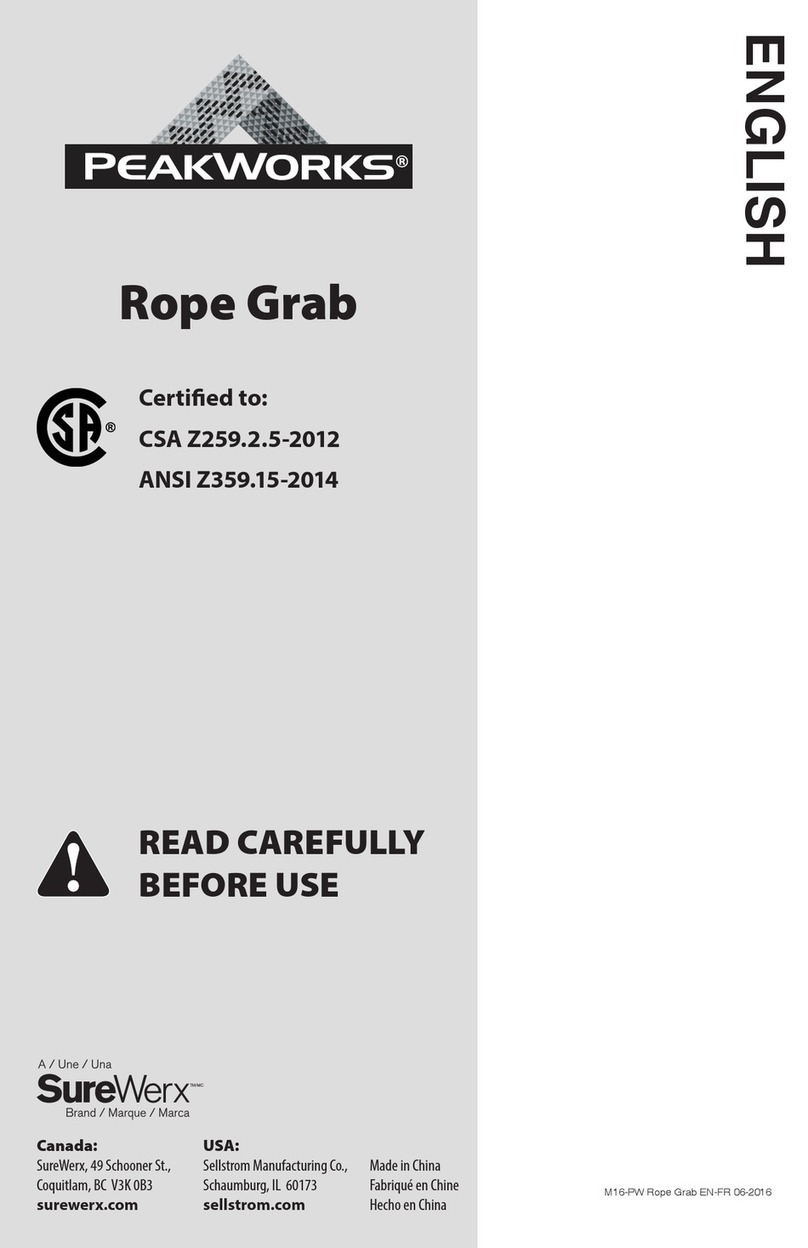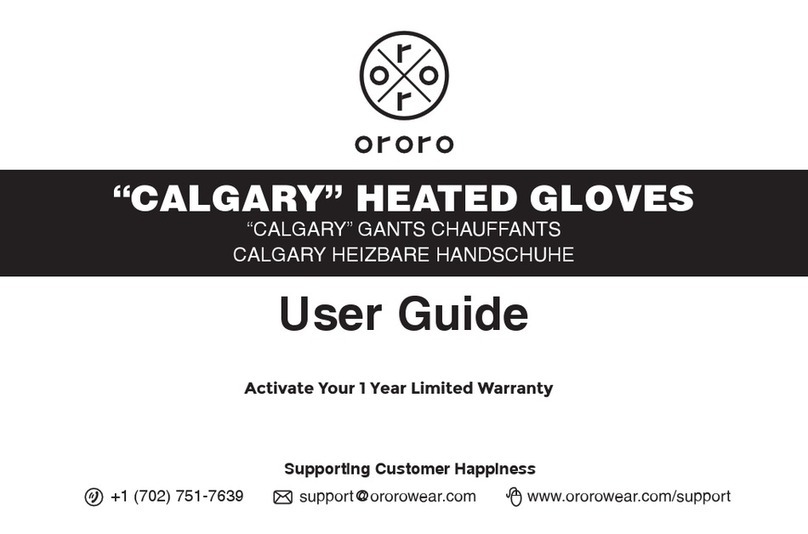Protecta Rall Dog AJ703A User manual

1
Instructions for Use AJ703A Rail Dog® Rail Anchor
This manual is intended to meet industry standards including OSHA and should be used
as part of an employee training program as required by OSHA.
WARNING: You must read and understand, or have the following instructions explained to you before using this equipment.
Failure to do so could result in injury or death.
IMPORTANT: This product is to be used as part of a personal fall protection system. It is intended to be used as an
anchorage point for either a shoc -absorbing lanyard or self-retracting lifeline for fall arrest, or with a positioning lanyard for
fall restraint. This unit should no be used for material handling or any other use other than that of a fall protection anchorage
device.
APPLICATION
The Rail Dog rail anchor is designed to meet the needs of those workers that are either working on a crane rail runway
or railway line that require a compliant means to anchor a personal fall arrest system (PFAS . The Rail Dog allows the
user to quickly and easily affix the anchor unit to a rail and then attach their PFAS. The unit is designed to allow some
horizontal movement along the anchor rail through sliding the Rail Dog, but is not designed to pass rail splice plates.
.0 LIMITATIONS
1.1 Rail Size: The Rail Dog rail anchor is designed to be used with a wide range of the most popular rail sizes and profiles.
The unit accommodates rail section widths from 2.75 in. to 3.25 in (approximately 85 - 140 lb rail and 132 lb Head Free
rail. Under no circumstances should the Rail Dog rail anchor be used on rails with section widths or rail weights outside
of this range.
1.2 Rail Slope: The Rail Dog rail anchor is designed to operate on crane or railway rails with less than 15 degrees of slope.
Should the unit be used on rails with a slope of greater incline, there is the risk of the unit sliding upon impact loading
and creating a dangerous situation for the user.
1.3 Capacity: The Rail Dog rail anchor is designed to serve as an anchorage point for one user with a combined weight of
310 lbs (user and tools . The units should not be used by workers with a greater combined weight.
1.4 Free Fall: The PFAS selected for use with the Rail Dog rail anchor must be rigged to limit free fall to 6 ft. or less when
possible, as required by OSHA. See section 3.7
1.5 Swing Fall: Swing falls occur when the anchorage point is not directly above or below the point where the fall occurs.
The force of striking an object as the result of a swing fall may cause serious injury. Minimize swing falls by working as
close to the anchorage point as possible. Do not permit a swing fall if it could create an injury.
1.6 Fall Clearance: There must be sufficient clearance below the user to arrest a fall before the user strikes the ground or
lower level hazard. The clearance required is dependent on the following factors:
• Elevation of Rail Dog anchor
• Lanyard length
• Lanyard elongation
• Worker height and weight
• Free fall distance
• Movement of harness attachment
See personal fall arrest system manufacturer’s instruction for more information.
Instructions for the following series products:
Rail Dog Rail Anchor
(See back page for specific model numbers.

2
1.7 Environmental azards: Use of this equipment with environmental hazards may require additional precautions to
prevent injury to the user or damage to the equipment. Hazards may include, but are not limited to: heat, chemicals,
corrosive environments, high voltage power lines, gasses, moving machinery, moving vehicles, and sharp edges.
Contact Protecta if you have any questions about using this equipment where environmental hazards may exist.
1.8 Training: This equipment is intended to be used by persons trained in its correct application and use.
1.9 Applicable standards: Refer to national standards including ANSI Z359.1 - 1998 and local, state, and federal (OSHA
requirements for more information on personal fall arrest systems and components.
2.0 SYSTEM REQUIREMENTS
2.1 PFAS Components: The Rail Dog rail anchor is designed for use with Protecta approved components and subsystems.
Non-approved components may be incompatible, and could affect the safety and
reliability of the complete system. Any PFAS used with the Rail Dog rail anchor
must meet applicable OSHA, state, federal, and ANSI requirements. A full body
harness must be worn by the worker when connected to the Rail Dog. The PFAS
must be able to arrest a worker’s fall with a maximum arresting force of 1800 lbs.
and where possible, limit the free fall distance to 6 ft. Also see section 3.7.
2.2 Compatibility of Connectors: Connector must support at least 5,000 lbs. Non-
compatible connectors may unintentionally disengage (roll out . The carabiner
supplied with the Rail Dog rail anchor is specifically designed with a special
5,000 lb. side load capable gate for this specialized application. This carabiner
must not be replaced with any other carabiner. Replacing the carabiner with any
other connector could result in injury or death.
2.3 Anchorage Strength: Rail anchors installed for fall arrest applications must be
attached to a rail capable of sustaining static loads of at least 3,600 lbs. by a
qualified person or 5,000 lbs without certification. See ANSI Z359.1 - 1998 for
certification definition and OSHA 29 CFR for “qualified person” definition.
3.0 INSTALLATION AND OPERATION
3.1 Before each use of this equipment, carefully inspect it according to the
inspection procedure listed in section 5.
3.2 Installation: The Rail Dog rail anchor is constructed of two sections. When
placed together, they are locked in place on the rail with the supplied carabiner.
See Figure 1. Once the carabiner has locked the sections in position on the rail,
the user’s lanyard may be attached to the carabiner.
3.3 Installation Steps:
Step 1. Remove the carabiner and separate the Rail Dog halves.
Step 2. Place the Rail Dog halves around the rail head and slide the sections
together.
Step 3. Lock the sections together using the supplied carabiner.
Step 4. Attach one end of the user’s lanyard to the carabiner and connect the
other end of the lanyard to the user’s full body harness.
3.4 Operation: Inspect and don your full body harness according to the
manufacturer’s instructions. Attach the connecting subsystem (lanyard to the
dorsal (back D-ring of the harness.
3.5 Structure Review: Ensure that the structure you will be connecting to is properly
supported before securing your connecting subsystem to the Rail Dog rail
anchor. Approach the structure using appropriate access equipment.
3.6 Anchorage Rail: Secure the Rail Dog rail anchor only to rails capable of
supporting the required loads.
Figure 1 - Installation Steps
1
2
3
4

3
3.7 Free Fall: The PFAS must be rigged to limit free fall to a maximum of 6 ft. where possible, in accordance with OSHA
requirements.
WARNING: Ma e sure the connecting subsystem (for example, lanyard and shoc absorber) is rated for the possible free fall.
3.8 Sharp Edges or Obstruction: Avoid working where the connecting subsystem (lanyard or other system components
may come into contact with or abrade against sharp edges.
3.9 After a Fall: Components which have been subjected to fall arrest forces must be removed from service and destroyed.
3.10 Rescue: The employer must have a rescue plan and the ability to implement it.
4.0 TRAINING
4.1 Training: It is the responsibility of the user and purchaser of this equipment to be familiar with the instructions,
operating characteristics, application limits, and the consequences of improper use of this equipment. Users and
purchasers of this equipment must be trained in the correct card and use of this equipment.
5.0 INSPECTION
5.1 Inspection Frequency
•Before each use, inspect the anchorage system per section 5.2.
•At regular intervals, and at least annually, the Rail Dog rail anchor must be formally inspected by a qualified person
other than the user. Inspect the Rail Dog rail anchor per section 5.2 and record the results of formal inspections in the
Inspection and Maintenance Log at the back of this booklet.
5.2 Inspection Points
•Check the carabiner for cracks or deformities. Make sure the gate opens and closes properly and locks securely.
•Inspect all metal parts for rust corrosion or other obvious deformities.
•Inspect all other components of the system according to instructions supplied with them.
5.3 Unsafe or Defective Conditions: If inspection reveals an unsafe or defective condition, remove the unit from service
and destroy it.
6.0 MAINTENANCE AND STORAGE
6.1 Maintenance
Periodically clean the of the Rail Dog rail anchor with water and mild soap solution.
6.2 System Components
Clean and store body support and associated system components according to manufacturer's instructions.
6.3 Storage
Store in a cool, dry, clean environment, out of direct sunlight. Avoid areas where chemical vapors may exist. Inspect
the system after extended storage.
7.0 LABELING
7.1 The following labels must be present and fully legible:
FRONT BACK

4
This instruction applies to the following models:
AJ703A
Additional model numbers may appear on the next printing of these instructions
USA Canada
3833 Sala Way 260 Export Boulevard
Red Wing, MN 55066-5005 Mi i auga, Ontario L5S 1Y9
Toll Free: 800-328-6146 Toll Free: 800-387-7484
Phone: (651) 388-8282 Phone: (905) 795-9333
Fax: (651) 388-5065 Fax: (905) 795-8777
www.protecta.com www.protecta.com
This manual is available for download at www.protecta.com. Form: 5902211
Rev: B
ETADNOITCEPSNISMETINOITCEPSNI DETON NOITCAEVITCERROCECNANETNIAM DEMROFREP
:yBdevorppA
:yBdevorppA
:yBdevorppA
:yBdevorppA
:yBdevorppA
:yBdevorppA
:yBdevorppA
8.0 INSPECTION AND MAINTENANCE LOG
DATE OF MANUFACTURE: _______________________________________________________________________
MODEL NUMBER: ______________________________________________________________________________
DATE PURC ASED: ____________________________________________________________________________
Other Protecta Safety Equipment manuals
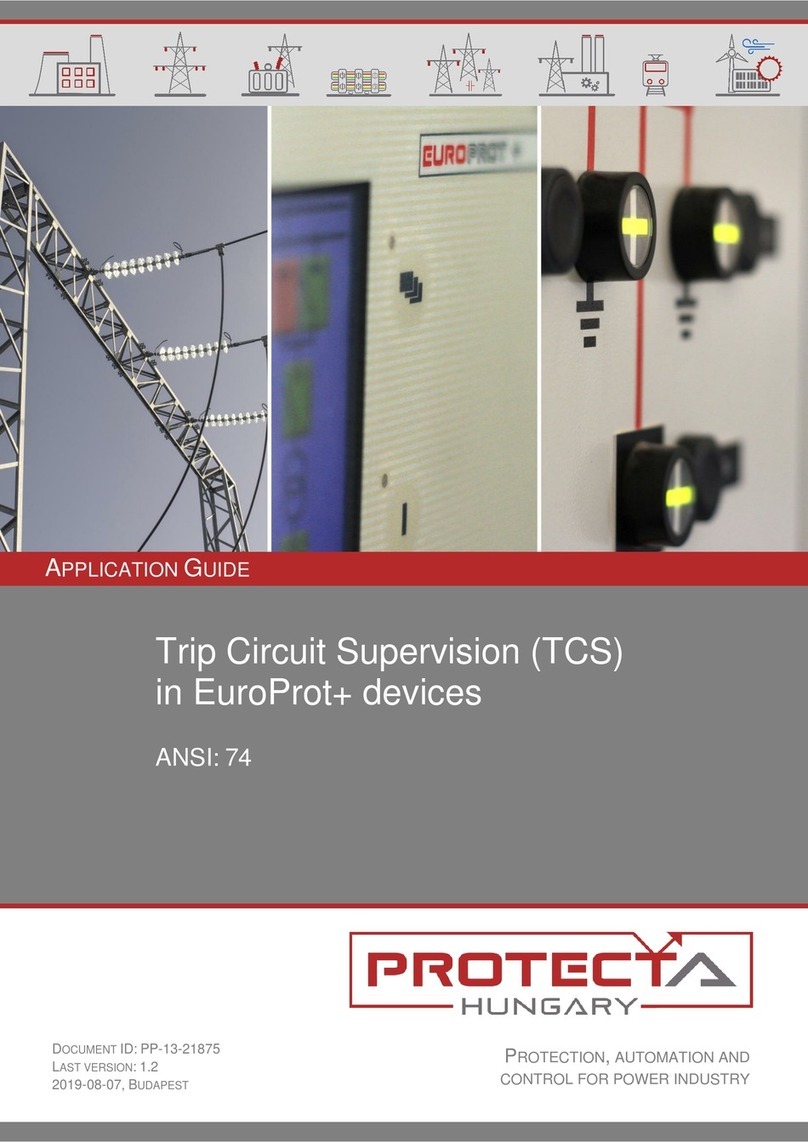
Protecta
Protecta TRIP+4201 User guide
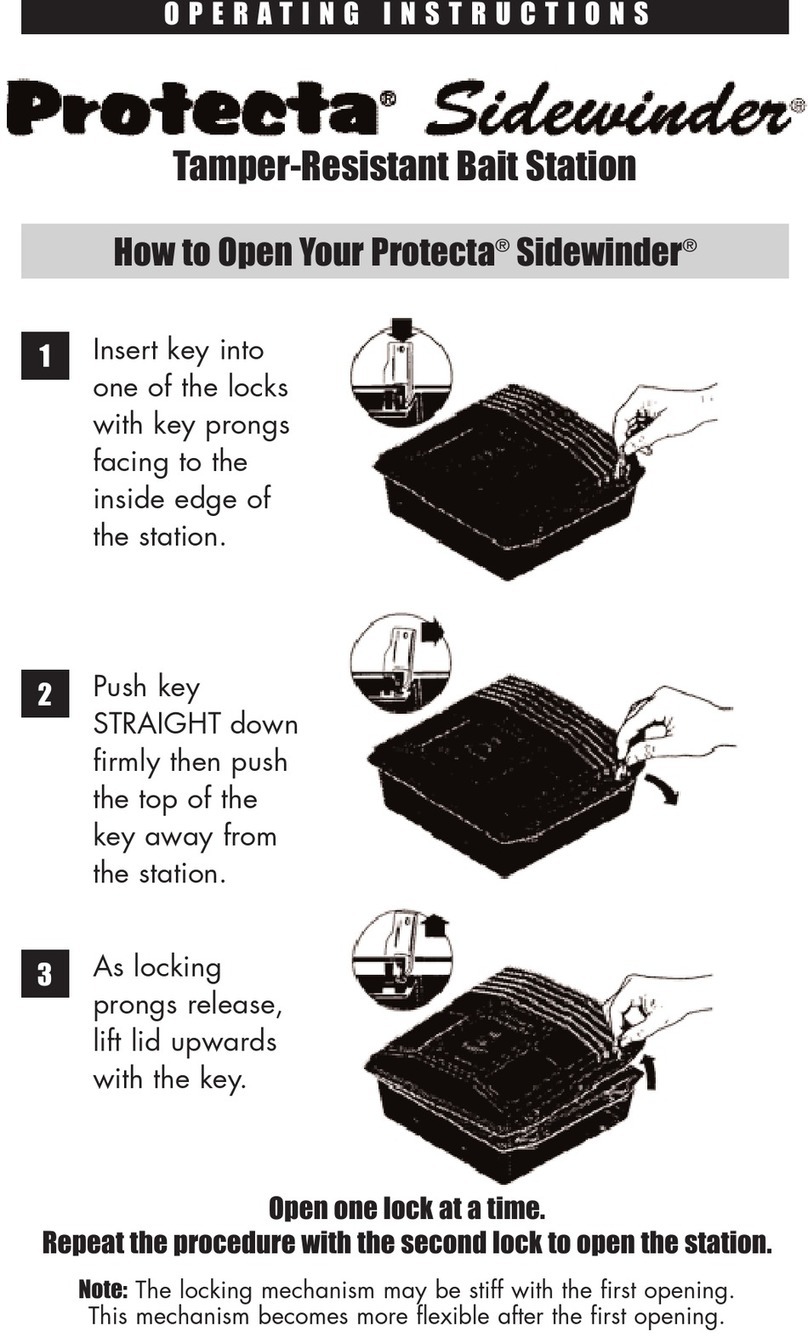
Protecta
Protecta Sidewinder User manual
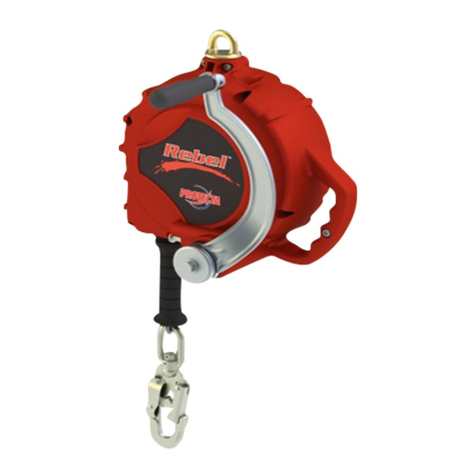
Protecta
Protecta Rebel 3591002 User manual
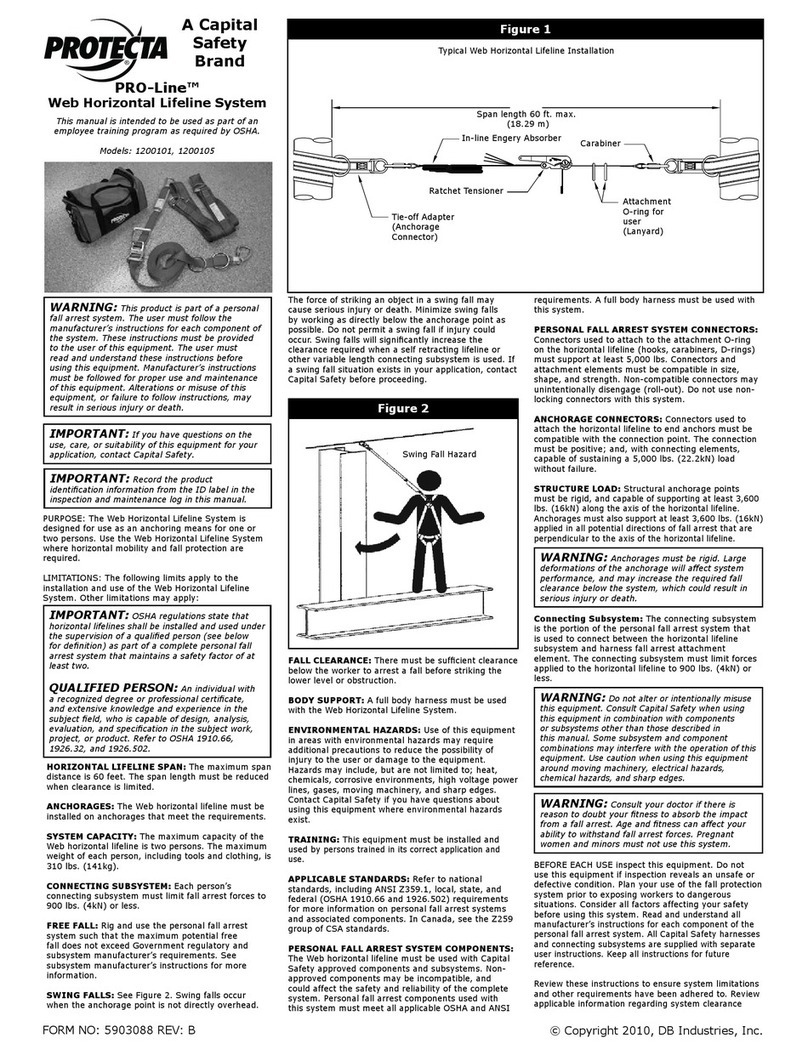
Protecta
Protecta PRO-Line 1200101 User manual
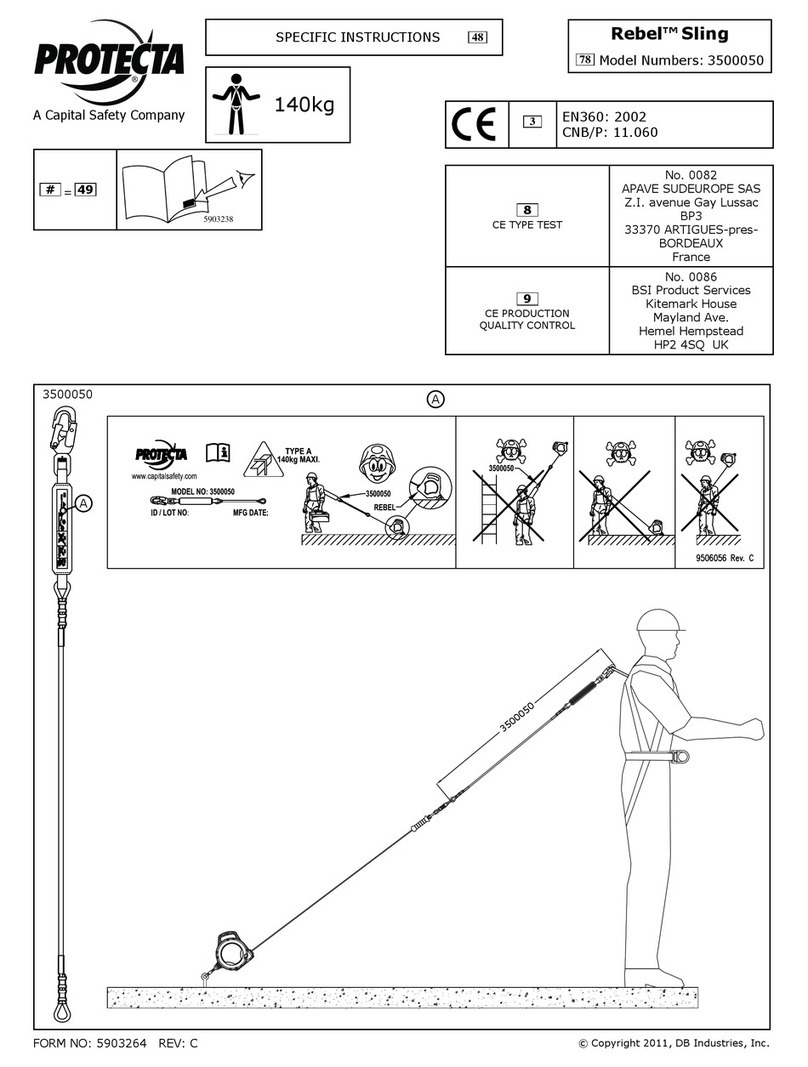
Protecta
Protecta Rebel 3500050 User manual
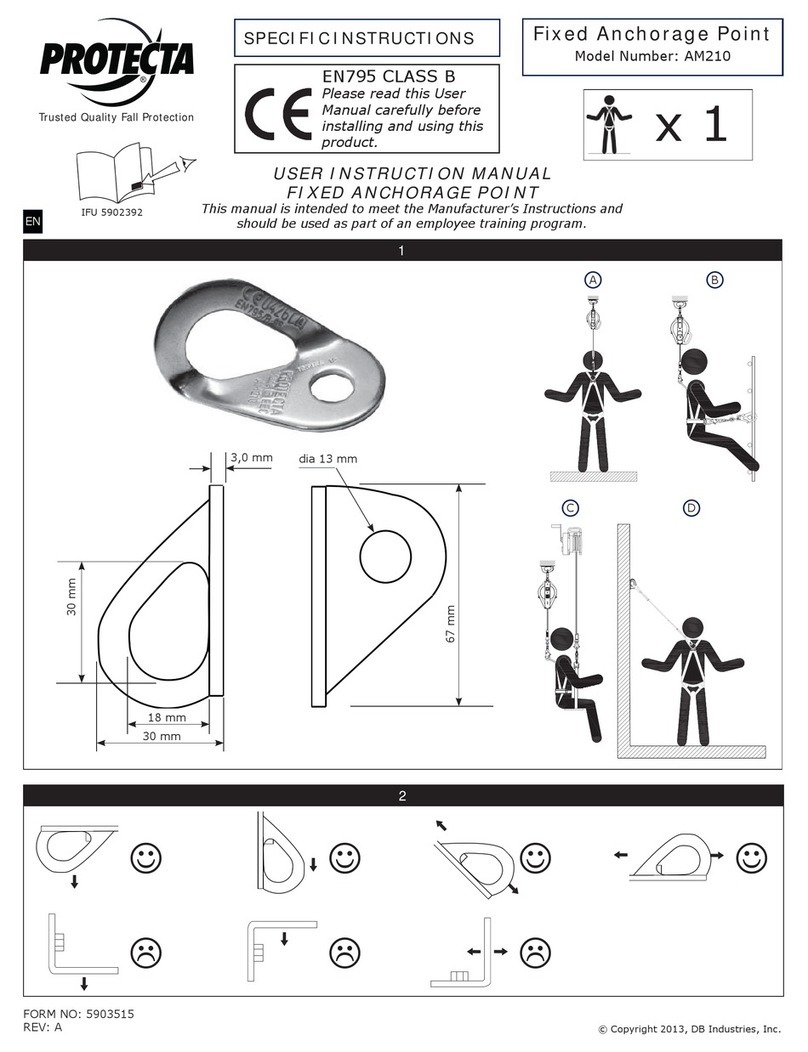
Protecta
Protecta AM210 Operator's manual
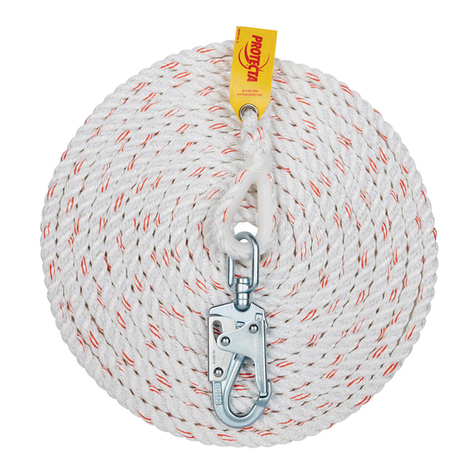
Protecta
Protecta 1299996 User manual
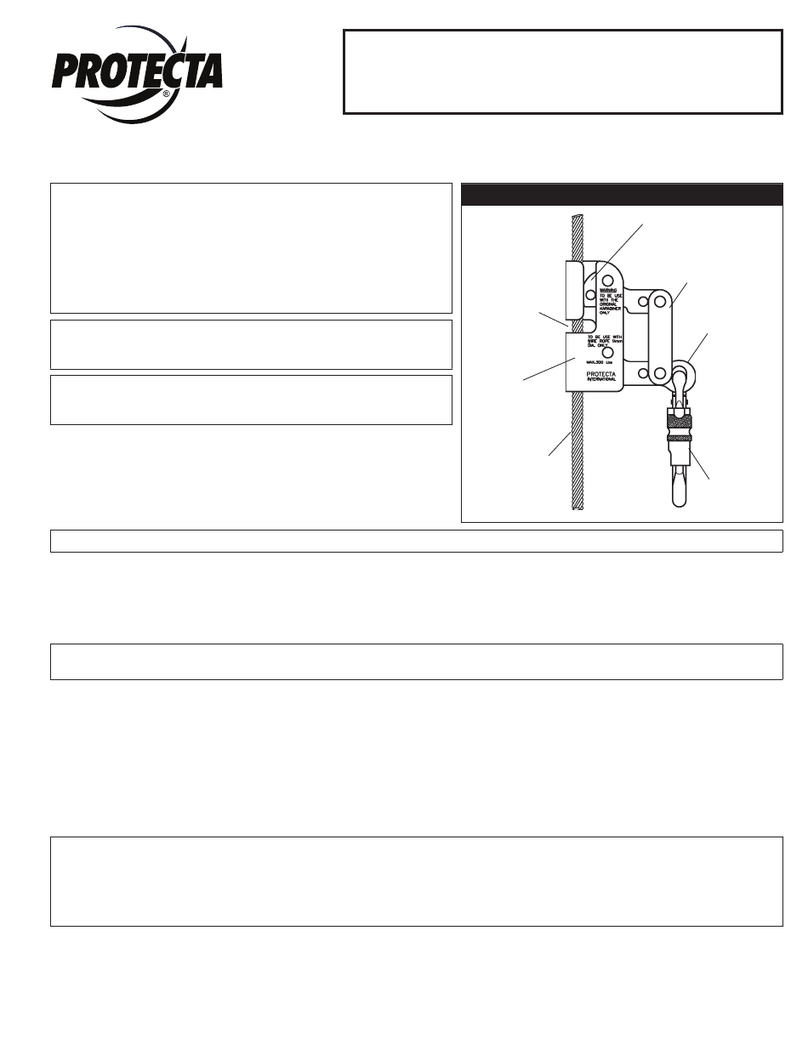
Protecta
Protecta AC351A User manual
